Hyundai i10 VS Audi Q2 – Specs, Efficiency & Price Comparison
Find out now which car fits your needs better!
The Hyundai i10 (Hatchback) is powered by a Petrol engine and comes with a Manuel or Automatic transmission. In comparison, the Audi Q2 (SUV) features a Petrol or Diesel engine and a Manuel or Automatic gearbox.
When it comes to boot capacity, the Hyundai i10 offers 252 L, while the Audi Q2 provides 405 L – depending on what matters most to you. If you’re looking for more power, you’ll need to decide whether the 90 HP of the Hyundai i10 or the 300 HP of the Audi Q2 suits your needs better.
There are also differences in efficiency: 4.90 L vs 4.80 L. In terms of price, the Hyundai i10 starts at 14600 £, while the Audi Q2 is available from 24900 £.
Compare all the key specs now and find out which model fits your lifestyle best!
Hyundai i10
The Hyundai i10 impresses with its compact design, making it an ideal choice for navigating through busy urban environments. Its interior is surprisingly spacious, offering drivers and passengers comfort beyond what one might expect from a city car. The model combines efficiency and practicality, making it an attractive option for those seeking both economy and functionality in their daily commute.
details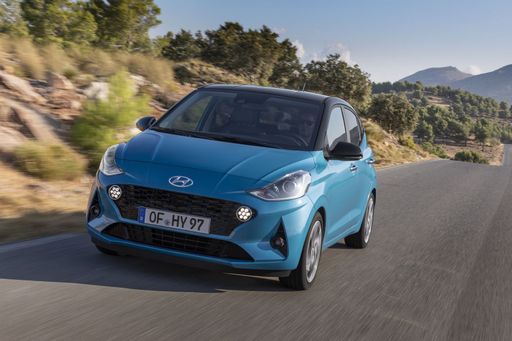 @ hyundai.news
@ hyundai.news
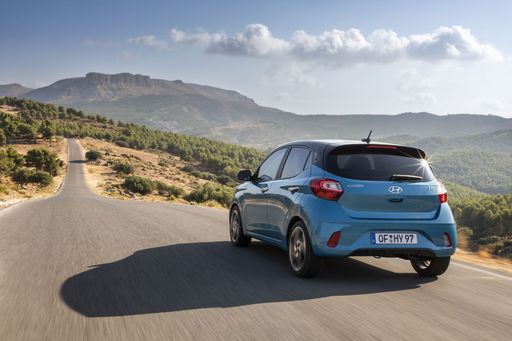 @ hyundai.news
@ hyundai.news
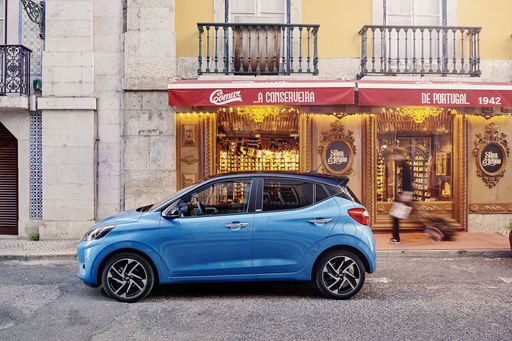 @ hyundai.news
@ hyundai.news
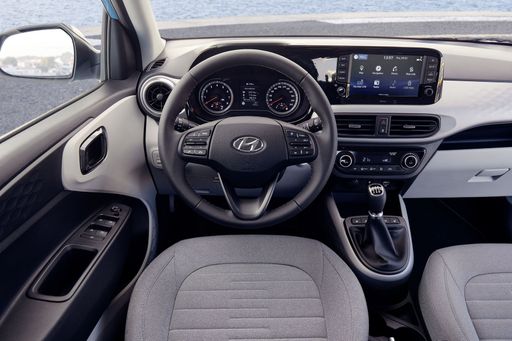 @ hyundai.news
@ hyundai.news
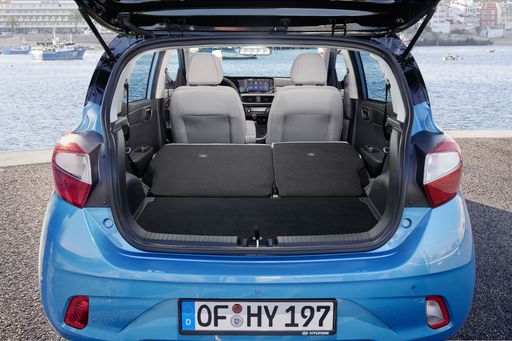 @ hyundai.news
@ hyundai.news
Audi Q2
The Audi Q2 captures attention with its bold and distinctive design, combining compact dimensions with a sporty silhouette. Inside, the cabin boasts high-quality materials and a modern infotainment system, ensuring a comfortable driving experience. With its agile handling and efficient performance, the Q2 is a perfect urban companion for those seeking both style and functionality.
details @ audi-mediacenter.com
@ audi-mediacenter.com
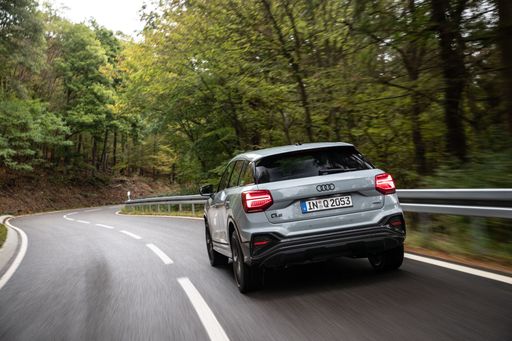 @ audi-mediacenter.com
@ audi-mediacenter.com
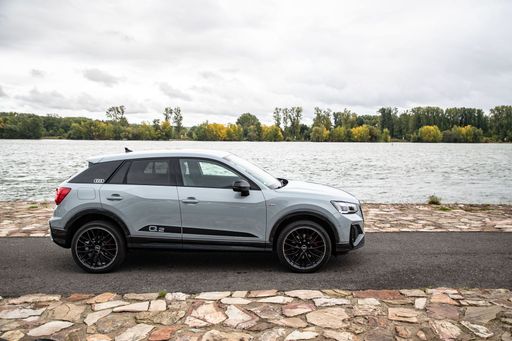 @ audi-mediacenter.com
@ audi-mediacenter.com
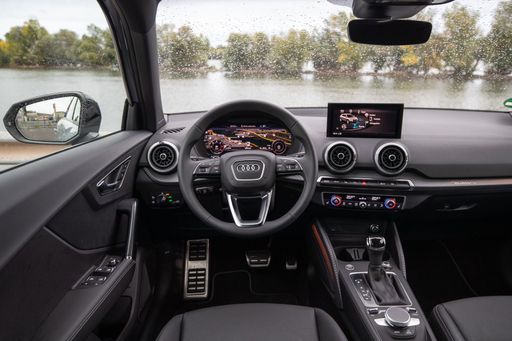 @ audi-mediacenter.com
@ audi-mediacenter.com
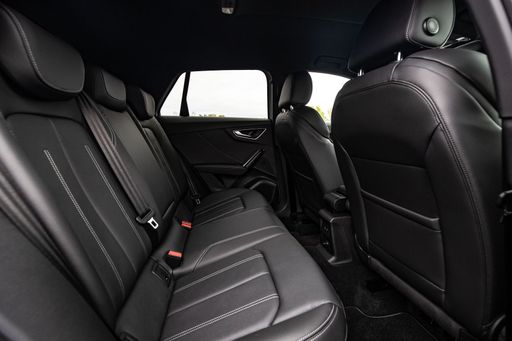 @ audi-mediacenter.com
@ audi-mediacenter.com
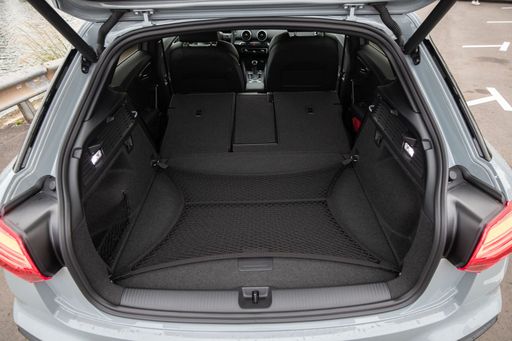 @ audi-mediacenter.com
@ audi-mediacenter.com

|

|
|
|
|
Costs and Consumption |
|
|---|---|
|
Price
14600 - 19000 £
|
Price
24900 - 43600 £
|
|
Consumption L/100km
4.9 - 5.5 L
|
Consumption L/100km
4.8 - 8.4 L
|
|
Consumption kWh/100km
-
|
Consumption kWh/100km
-
|
|
Electric Range
-
|
Electric Range
-
|
|
Battery Capacity
-
|
Battery Capacity
-
|
|
co2
110 - 124 g/km
|
co2
127 - 190 g/km
|
|
Fuel tank capacity
36 L
|
Fuel tank capacity
50 - 55 L
|
Dimensions and Body |
|
|---|---|
|
Body Type
Hatchback
|
Body Type
SUV
|
|
Seats
4 - 5
|
Seats
5
|
|
Doors
5
|
Doors
5
|
|
Curb weight
996 - 1099 kg
|
Curb weight
1330 - 1610 kg
|
|
Trunk capacity
252 L
|
Trunk capacity
355 - 405 L
|
|
Length
3670 - 3675 mm
|
Length
4208 - 4216 mm
|
|
Width
1680 mm
|
Width
1794 - 1802 mm
|
|
Height
1480 - 1483 mm
|
Height
1495 - 1508 mm
|
|
Payload
344 - 423 kg
|
Payload
450 - 510 kg
|
Engine and Performance |
|
|---|---|
|
Engine Type
Petrol
|
Engine Type
Petrol, Diesel
|
|
Transmission
Manuel, Automatic
|
Transmission
Manuel, Automatic
|
|
Transmission Detail
Schaltgetriebe, Automatisiertes Schaltgetriebe
|
Transmission Detail
Schaltgetriebe, Automat. Schaltgetriebe (Doppelkupplung)
|
|
Drive Type
Front-Wheel Drive
|
Drive Type
Front-Wheel Drive, All-Wheel Drive
|
|
Power HP
63 - 90 HP
|
Power HP
116 - 300 HP
|
|
Acceleration 0-100km/h
11.4 - 18.4 s
|
Acceleration 0-100km/h
4.9 - 10.5 s
|
|
Max Speed
143 - 175 km/h
|
Max Speed
197 - 250 km/h
|
|
Torque
93 - 172 Nm
|
Torque
200 - 400 Nm
|
|
Number of Cylinders
3 - 4
|
Number of Cylinders
3 - 4
|
|
Power kW
46 - 66 kW
|
Power kW
85 - 221 kW
|
|
Engine capacity
998 - 1197 cm3
|
Engine capacity
999 - 1984 cm3
|
General |
|
|---|---|
|
Model Year
2024
|
Model Year
2024
|
|
CO2 Efficiency Class
C, D
|
CO2 Efficiency Class
D, E, F, G
|
|
Brand
Hyundai
|
Brand
Audi
|
Hyundai i10
Introduction to the Hyundai i10
The Hyundai i10 has consistently proven to be a dependable and stylish companion for urban driving. Known for its compact design and efficiency, this hatchback offers a perfect blend of modern aesthetics and practicality, making it a popular choice for city dwellers and small families alike.
Performance and Efficiency
The Hyundai i10 is available with both manual and automatic transmissions, catering to various driving preferences. Engine power ranges from 63 to 90 PS, providing a versatile driving experience for both novice and seasoned drivers. The fuel consumption varies between an impressive 4.9 to 5.4 litres per 100 kilometres, fitting for those looking to minimise fuel costs while also reducing their carbon footprint.
Engine and Transmission
Equipped with a choice of 1.0-litre or 1.2-litre engines, the i10 offers up to 172 Nm of torque, ensuring lively performance. The models feature front-wheel-drive configurations, allowing for smooth handling and reliable road performance. The car excels in city driving but is equally capable on longer journeys.
Interior and Comfort
Despite its compact size, the Hyundai i10 does not compromise on interior space and comfort. It accommodates four to five occupants comfortably, offering sufficient legroom and headroom. Its flexible seating arrangement and a 252-litre boot make it ideal for both quick trips and weekend getaways.
Safety and Technology
Safety remains a priority with Hyundai, and the i10 is no exception. It comes equipped with multiple airbags, stability control, and advanced braking systems. Technology-wise, the i10 features a user-friendly infotainment system with smartphone connectivity, ensuring a pleasant and connected drive.
Design and Style
The Hyundai i10’s design is both modern and sleek, making it stand out in the compact hatchback segment. With a length ranging from 3670 to 3675 mm, a width of 1680 mm, and a height of 1480 to 1483 mm, the i10 strikes a perfect balance between style and functionality.
Affordable Pricing and Value
The i10 is available in several trims including the Select, N Line, and Prime, among others, with prices ranging from €16,990 to €22,190. Considering its features and low running costs — with monthly expenses estimated between €694 to €793 — the Hyundai i10 offers substantial value for those seeking an economical yet stylish hatchback.
Conclusion
The Hyundai i10 combines efficiency, modern design, and practicality in a compact package. Whether you are seeking a reliable city car or an economical daily driver, the Hyundai i10 is a strong contender worth considering in the compact car market of 2024.
Audi Q2
The Audi Q2 demonstrates a perfect blend of compact dimensions and luxury features, making it a prominent choice in the competitive SUV segment. With an attractive exterior design, high-quality interiors, and cutting-edge technology, it stands out as a versatile vehicle for urban commuters and weekend adventurers alike.
Striking Design and Practicality
The Q2’s design is a clear reflection of Audi's sophisticated aesthetics. Its bold stance is accentuated by angular lines and a distinctive Singleframe grille. Measuring between 4208 mm and 4216 mm in length, it remains compact yet offers ample interior space for passengers and cargo alike. The rear boasts a hatchback design, contributing to a practical trunk capacity of 355 to 405 litres, perfectly suited for everyday tasks.
Engine Options and Performance
Audi caters to diverse customer preferences by offering a range of engine choices, from efficient petrol units to powerful diesels. Engine power ranges from 116 to 300 PS, ensuring lively performance, while the 0-100 km/h acceleration time varies between 4.9 and 10.5 seconds, depending on the variant. The model year 2024 continues to impress with its harmonic balance of performance and economy, with fuel consumption figures ranging from 5.1 to 8.4 L/100 km.
Advanced Transmission and Drive Technologies
The Q2 is available with both manual and automatic transmissions, including Audi’s sophisticated S tronic dual-clutch system. Front-wheel drive and all-wheel drive options offer flexibility for different driving conditions, ensuring exceptional grip and stability on the road. With available torque figures from 200 to 400 Nm, the Q2 responds adeptly to driver commands, providing a dynamic driving experience.
Cutting-Edge Technology and Interior Features
Inside the Q2, the focus on quality is evident, with premium materials and clean lines that create a refined atmosphere. The multimedia interface features the latest in connectivity, including smartphone integration and a user-friendly interface. Optional upgrades such as the Virtual Cockpit and advanced driver assistance systems further enhance both comfort and safety, ensuring a worry-free driving experience.
Efficiency and Eco-Friendliness
Environmental considerations are integrated into the Audi Q2’s design, with CO2 emissions ranging from 130 to 190 g/km, depending on the chosen engine. The Q2 is available in several equipment lines such as ‘advanced’ and ‘S line’, allowing buyers to personalise their vehicle while taking advantage of the brand's commitment to sustainability. Fuel efficiency is balanced without compromising performance, confirming Audi's dedication to eco-friendly driving.
Conclusion: The Ideal Compact SUV
In summary, the Audi Q2 successfully embodies the perfect compact SUV, making it suitable for a variety of lifestyles. Its combination of distinctive design, flexible performance options, cutting-edge technology, and emphasis on efficiency make it a compelling choice for those seeking a premium vehicle that stands out on the roads and in the city.
The prices and data displayed are estimates based on German list prices and may vary by country. This information is not legally binding.
